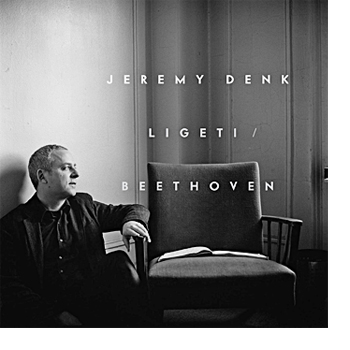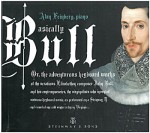Column Name
Title
Basically Bull: Keyboard Works of John Bull & Others. Alan Feinberg, piano. (Steinway & Sons 30019)
Body
When people speak of a musical avant-garde, they are usually referring to works from the 20th and 21st centuries. But on this fascinating recording, pianist Alan Feinberg (B.M. ’72, M.M. ’73, piano) has found a cutting edge in the repertoire of John Bull (1562-1628) and some of his contemporaries. As Feinberg writes in his liner notes, “Bull offered up experimental, challenging works—pieces that so exuberantly overstepped conventional musical and instrumental expectations that they were essentially and deeply antithetical to the polite dictates of the upper class.”
Feinberg highlights these qualities by placing Bull’s works alongside those of William Byrd (c. 1543-1623) and others, many of which are equally captivating, even if often less dense than those of the “vexatious” Dr. Bull (as he is referred to on the CD cover and which some called him during his lifetime). A gentle Gloria tibi Trinitas from John Blitheman (1525-1591) and two masterful choices from Orlando Gibbons (Fantasia and Pavan) show that keyboard virtuosity is but one element of expressivity.
Other notable tracks are Bull’s brief galliard “St. Thomas, Wake!” with its extravagant keyboard splashes, his dancelike In Nomine IX, and the contrapuntal Ut, re, me, fa, sol, la—the latter among many of the Bull works collected in the Fitzwilliam Virginal Book, which can be seen in the Fitzwilliam Museum in Cambridge (U.K.). At the simpler end of the spectrum is Eterne Rex Altissime by John Redford (d. 1547), which is beguiling in its grace and yet surprising when the melodic line takes an occasional unexpected turn. A number of the pieces, such as In Nomine V and Bull’s Goodnight, begin innocuously but the writing grows more difficult as they progress, giving Feinberg’s agile hands a workout across the keyboard.
Throughout the program, Feinberg shows great care and even a bit of restraint that, coupled with rhythmic accuracy and carefully executed ornaments, make this disc a joy. The alluring recording, which is clear and without a hint of harshness, was made by Daniel Shores at Sono Luminus Studios in Boyce, Va.
Ligeti/Beethoven. Jeremy Denk, piano. (Nonesuch 530562-2)
 Most pianists would not imagine pairing Beethoven with Ligeti, two giants of the keyboard repertoire, but Jeremy Denk (D.M.A. ’01, piano) is not your average musician. In this recent recording, he plays selections from the first two books of Ligeti’s daunting Piano Études, and in between, Beethoven’s final piano sonata, the great C-minor, Op. 111. Denk offers intelligence and showmanship in equal measure, not to mention clearly written, absorbing liner notes. (A recipient of a MacArthur “genius” grant, Denk is as fine a writer as he is a pianist. His blog, Think Denk, is highly regarded, he is an occasional contributor to The New Yorker, and he is working on a book.)
Most pianists would not imagine pairing Beethoven with Ligeti, two giants of the keyboard repertoire, but Jeremy Denk (D.M.A. ’01, piano) is not your average musician. In this recent recording, he plays selections from the first two books of Ligeti’s daunting Piano Études, and in between, Beethoven’s final piano sonata, the great C-minor, Op. 111. Denk offers intelligence and showmanship in equal measure, not to mention clearly written, absorbing liner notes. (A recipient of a MacArthur “genius” grant, Denk is as fine a writer as he is a pianist. His blog, Think Denk, is highly regarded, he is an occasional contributor to The New Yorker, and he is working on a book.)
Though Denk displays plenty of jaw-dropping technique (which the program mandates), he has other ways to impress. In the Ligeti, he gently underlines the mystery of Arc-en-ciel, then plunges into Automne a Varsovie with its final parachute drop from the upper keyboard to its lowest registers. In the notes, Denk says he thinks Vertige is the most difficult of the études, with its dizzying overlapping chromatic scales, though Le escalier du diable (The Devil’s Staircase) might take the prize for sheer finger-busting intricacy.
If one listens to the recording as programmed, the Beethoven is its spiritual nexus. About the sonata’s two-movement format, Denk writes, “As with the greatest Beethoven pieces, the structure itself becomes a message: A question is overwhelmed by its answer.” Because it follows Ligeti’s Fanfares, the opening Maestoso (the question), with its ferocious passagework, takes on a new perspective. And in the answer—Arietta, a theme with variations that is almost twice as long as the question—Denk finds the same sobriety that recalls Arc-en-ciel. Color and detail are everywhere: about 10 minutes into the Arietta, Denk infuses passages of triplets with the innocence of a music box. As he reaches the sonata’s end, one reflects on the ability of a work almost 200 years old that, coupled with the artistry of an insightful interpreter, can yield such probing results.
Veteran engineer Adam Abeshouse made the natural-sounding recording in the popular SUNY Purchase Performing Arts Center Recital Hall.





